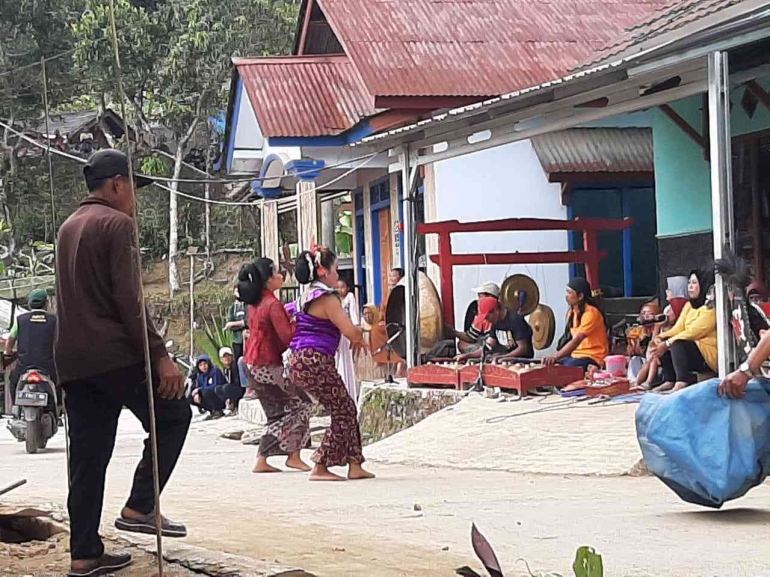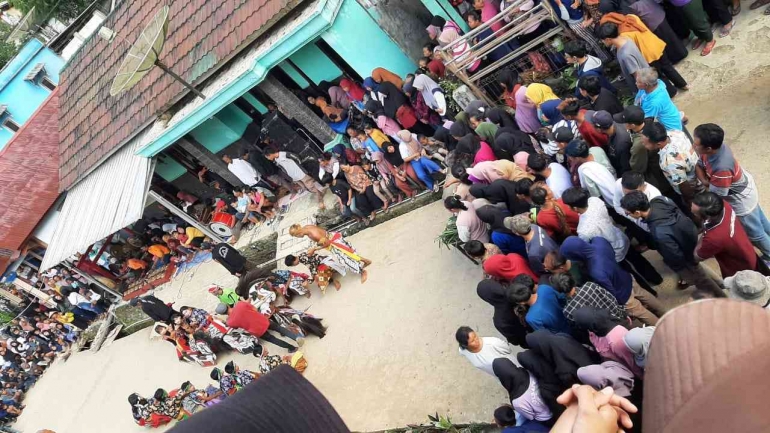by: Indrasta Daniel
Being involved in a Community Service Program (Kerja Kuliah Nyata Tematik Inovasi) is a special honor for college students. Yes, it is a mandatory activity for almost every third-year student in Indonesia, and it can create unique experiences unlike any other. KKNT-I drives students to practice what they have learned inside their classrooms and apply them to solve everyday problems in (remote) corners of the country. It is also an event for college students to learn local wisdom from the villages they visit; thus, they give and receive. In addition, it is a time to experience one-of-a-kind events that students would otherwise never see if they were only to stay at the convenience of their campus.
One example being The Ebeg dance.
Along with eight other students from IPB University, we were sent for 40 days to stay in Desa Klesem, a small village tucked high in the mountains on the outskirts of Pekalongan Regency, Central Java. One day, we were invited by one of the neighbors to watch an Ebeg show. We were told that Ebeg is a traditional celebration. It is a folk dance and music performance commonly associated with harvest celebrations and other festive occasions. It was said that the Ebeg dance is similar to the more famous Kuda Lumping dance, which involves dancing with horses made of woven bamboo with supernatural elements. It is not uncommon to have Ebeg dances to participate in many celebrations such as birthdays, weddings and grand openings. Every region of Central Java likely has dance groups dedicated to performances like Ebeg.

The Ebeg dance we were invited to took place on Wednesday (19/07). A crowd circled a section of the village road in front of a refurbished house. We arrived at the middle of the show when the younger dancers were performing. Some of the audience told us that the performance earlier was Tari Lengger, a traditional dance performed by a man and a woman. After that, we saw a girl taken to a temporary tent to be possessed. When she was brought out, she seemed possessed, or was she acting? We have no idea, but whoever controls her mind is making her dance quite well. People were throwing flower petals and money to exorcise her (and as donations to the Ebeg group), but it took the skilled hands of the elder/ringmaster to snap her out of it.
We heard stories from the locals who watched Ebeg dances of how innocent bystanders were possessed to dance and act extravagantly. It sent shivers down our spine, for we reluctantly remembered a tragic incident in which a separate group of college students were possessed by supernatural spirits while in KKNT-I (you may know in 2019 when a well-known movie was made based on that event).


It only took a short amount of time for the dancers to start moving wildly like spirit-possessed madmen. Indeed, one of the things that make the Ebeg dances look so entertaining is the actions of the possessed people. Some wilder dancers crashed into the audience, looking for the next target. Anyone whom they bumped would also be possessed and joins the dance. The possessed would not only dance madly but also feast madly. We saw the possessed feeding on raw vegetables and sugar canes, drinking coconut water and peeling off the fruit with their bare teeth, and even eating the dirt of the ground. A few people even ate panes of glass mugs, not something ordinary people could ever do. It seemed that the spirits make their host impervious to any internal damage. The locals call this sort of possession as ‘janturan’.
Sometimes we laughed at the antics of the possessed villagers, who were acting like ridiculous monkeys, but we stayed alert. As mentioned, there is no telling who’ll be bumped next and possessed, and we even saw an innocent balloon seller fall to a possessed dancer. Good thing he was unharmed, however.
When the sun was about to set, the show was over. The dancers were cured, the victims exorcised, and the audience went home. As we returned home, we talked excitedly about the show, repeating key moments. Were we possessed by the spirit of memories that make us laugh at the funny antics, awe upon the crazy stunts, or shudder in fear of being the next dancers? Who knows? Whatever it may be, this is an experience we will never forget.
Thus, the memory KKNT-I brings, including local heritages like the Ebeg dance, are certainly one-of-a-kind events that college students would never see if they to only stay inside the confines of their classroom walls.
***










